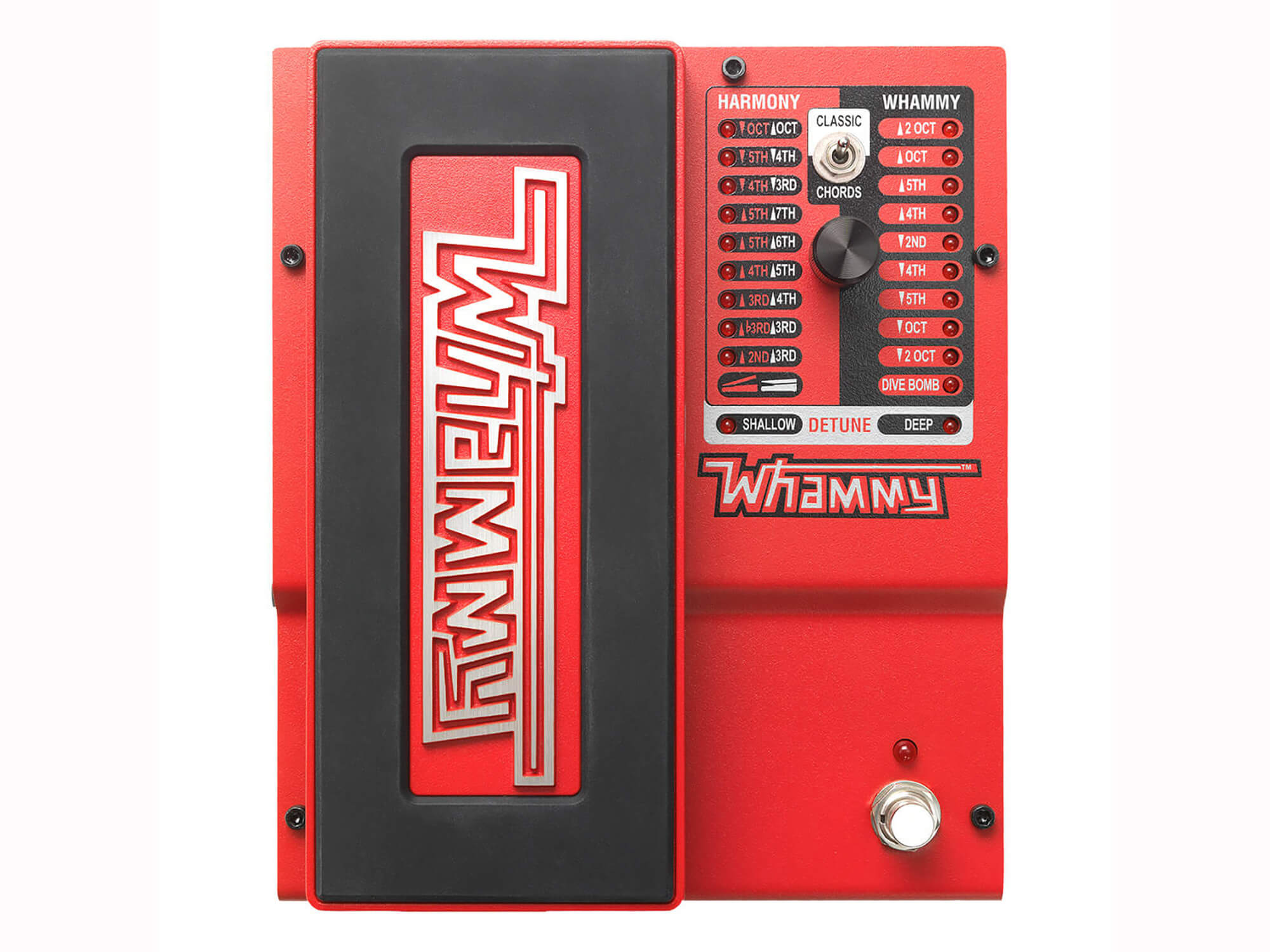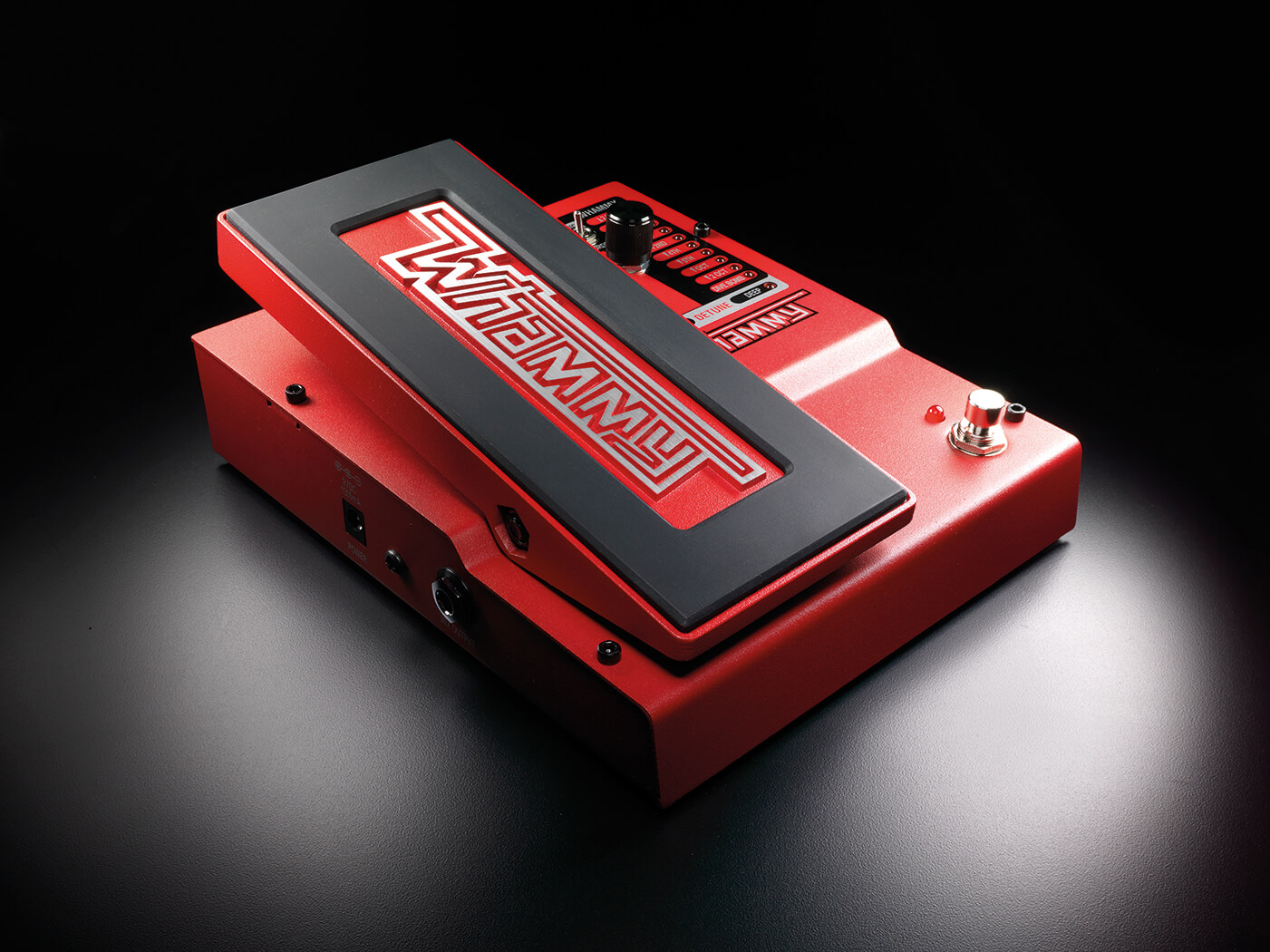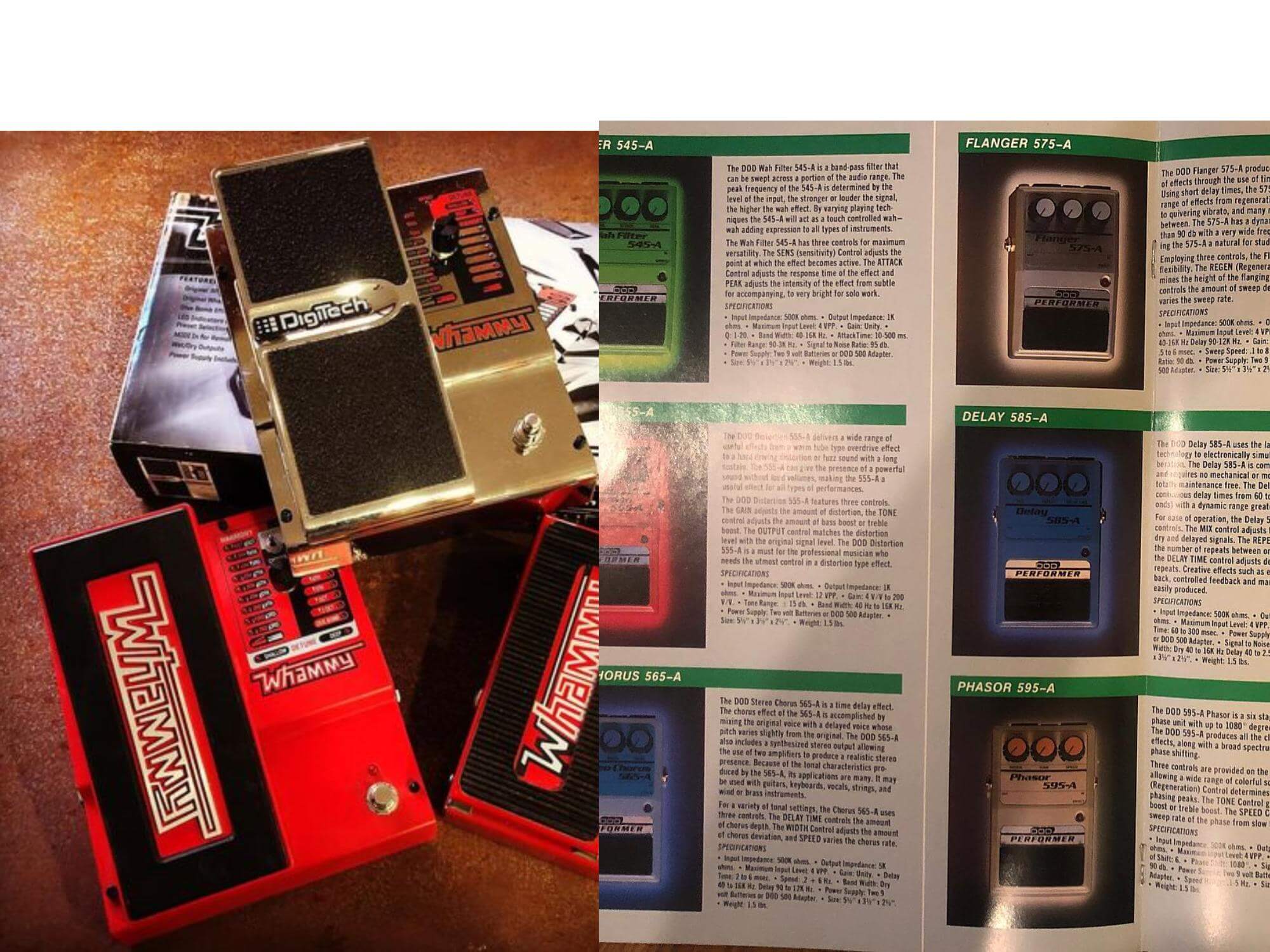Cause & Effects: Why the DigiTech Whammy is the most iconic pedal of the modern era
Name me a more iconic pedal than the Digitech Whammy pedal? I’ll wait…

Image: DigiTech
The Digitech Whammy pedal has always intrigued me as a pedal builder, in an industry dominated by what clone is released next, the Whammy stands alone as one of the best and most revered pedals of its type. It is so good that when you need a Whammy, nothing else will do the job, and the majority of guitarists reach for the real thing over any clones or similar products – quite a feat in today’s pedal world.
So what are they, and what do they do?
The red box with a treadle
The Whammy has been around since around 1989 in various versions. Fundamentally, it is a pitch-shifting effects pedal that is used by guitarists of many genres to create a variety of sounds, including dive bombs, harmonies, and other pitch-shifted effects such as octave up and two octave down. This is all controlled by your foot as you rock a treadle back and forth.
They are one of the most readily recognisable pedals in the effects world and the “Ferrari red” colour is so iconic that it stands out a mile on any pedalboard.

How does it work?
Pitch-shifting pedals such as the whammy work by altering the pitch or frequency of the incoming guitar signal. Unlike analogue octave up or down pedals, the whammy uses digital signal processing (DSP) technology to manipulate the original signal and output a synthesised version of the original guitar but in this case it’s done in near real-time (as fast as the DSP can allow) to prevent latency making it difficult to use.
As technology has progressed the latency has reduced with WH-1 original variants being noticeably slower than the modern recreations. The Whammy can also be used to create harmonies. By shifting the pitch of the signal to a certain interval, the pedal can create a harmony with the original note. This allows guitarists to create two or more notes at once, adding a thickness to their playing, almost like having two guitarists in the band playing the same thing.
On top of these sound possibilities, the Whammy can be controlled by midi to great effect introducing more control and craziness to what is an already crazy pedal.

Has it been cloned?
For many years the Whammy was the only game in town that offered this level of pitch shifting with the treadle manipulation. On the surface this seems mad – the sounds it produced were previously unattainable in one box, making it a truly game-changing device. This meant that it was soon adopted by some equally boundary-pushing guitarists who would make the Whammy sound an iconic part of some classic songs. Just try to imagine Rage Against The Machine’s Bulls On Parade without one, or Pink Floyd’s Marooned – would they have been as impactful without the Whammy?
So why wasn’t it cloned immediately? Well, the answer is that the technology used within, the code used to create it, and the price point that a giant brand like DigiTech was able to create all this for contributed to a strong monopoly for a period of time.
In the decades since there have been some attempts to replicate the functionality of the Whammy, but only by a few select big names in the effects world – the technical burden of creating such a pedal is too high for all but the biggest brands to really bother with. EHX make the ‘Slammi’ for example, while Danelectro made the ‘Shift Daddy’ but neither really caught on in a world where the Whammy still seemed like the default option.
What are the negatives to the Whammy?
Latency: the biggest potential issue with the Whammy is latency, or the delay between when you play a note and when you hear the effect. Whilst newer versions have relatively low latency, vintage originals can have noticeable latency in some cases, particularly if you’re playing in a live setting.
Complexity: pitch-shifting pedals can be quite complex to use, particularly if they offer a range of different effects and settings including MIDI. This means that it can take some time to learn how to use them as a user.
Power: the original Whammy for instance uses a proprietary power supply that offers large amounts of current to get the WH-1 juices flowing, but if you’re trying to fit it on a board that will be a pain
Bulk: finally, the pedal is quite large and takes up a lot of pressure pedalboard real estate, so it needs to be a considered choice when adding it to your board. How much are you going to use it really?
Understanding the Whammy’s sounds
The whammy has been used on loads of iconic an incredible tracks, in no particular order:
- Killing in the Name by Rage Against the Machine
- Are You Gonna Go My Way by Lenny Kravitz
- Pressure by Skindred
- Fury by Muse
- Alive by Pearl Jam
- Marooned by Pink Floyd
- Floods by Pantera
- A Place For My Head Linkin Park
So that’s a brief look at the Whammy, and why it’s such a unique and important pedal in the modern history of guitar. It’s arguably the most instantly recognisable ‘sound effect’ pedal of the last 40 years – both sonically and visually – and that’s why it’s so iconic.
In fact, it’s my belief that everyone should have a Whammy pedal, even if you just pull it out to blast out Killing In The Name Of now and then.
For more features, click here.
